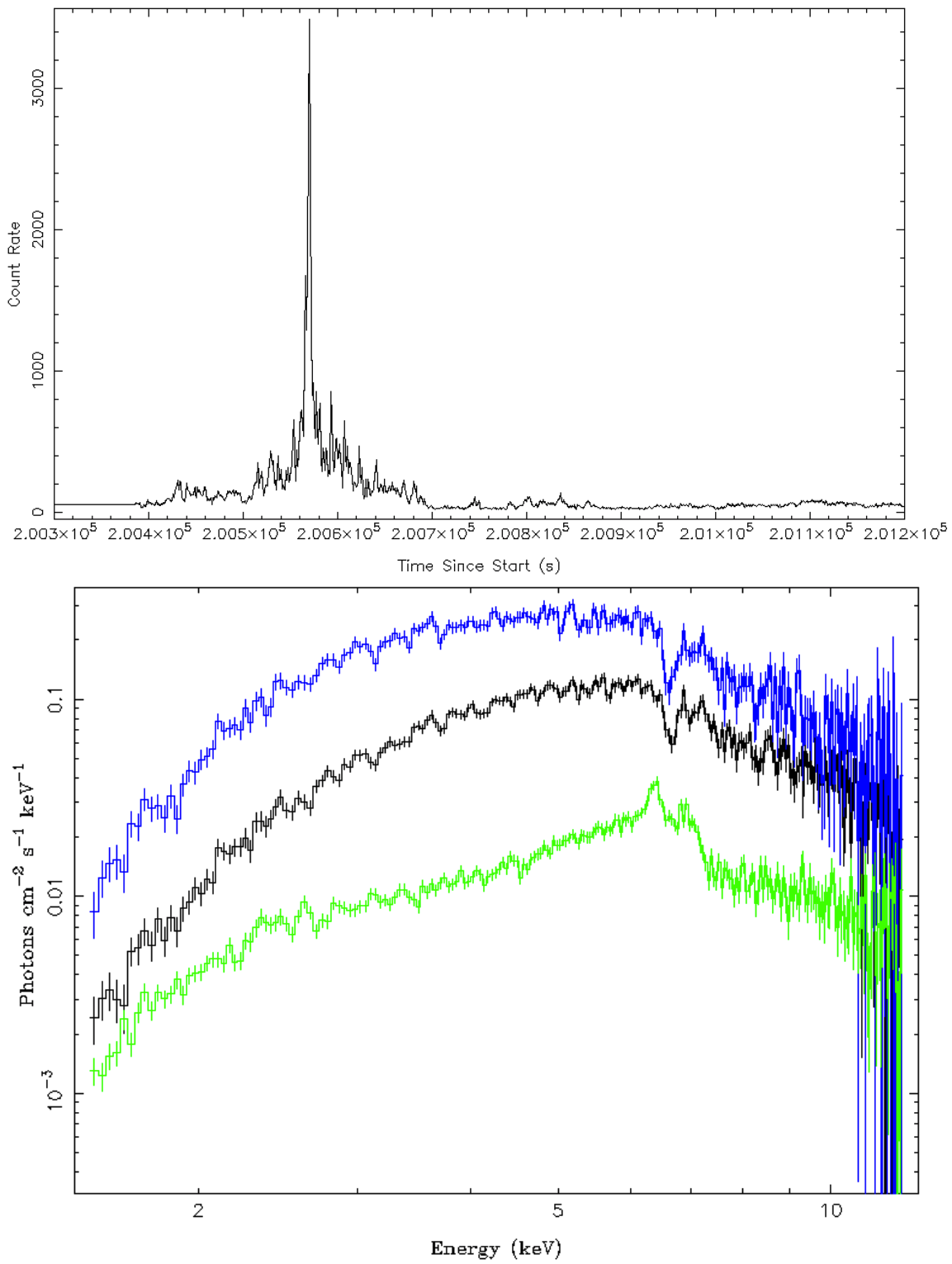NICER / ISS Science Nugget for May 23, 2019Rapid flare from GRS 1915+105 displays remarkable spectral featuresMost stellar mass black holes spend by far the majority of their time in quiescence, at very low brightness with little or no accretion onto the black hole. Every few years (or decades) they go into outburst, shining brightly for a few months before fading away. Not so with GRS 1915+105, a stellar mass black hole that has been in outburst for 27 years. It's famous for its bizarre variability, high luminosity, and relativistic jets. We recently reported that after so long, this source seems to be heading towards quiescence, and NICER began monitoring more frequently. GRS 1915+105 has never been predictable, and our latest observations this past weekend confirm this in style. In the midst of a long, slow increase in brightness, NICER detected a sudden bright flare from the black hole. In the course of 37 seconds, the system brightened by a factor of about 70 and then dropped again; the total duration of the flare was under 200 seconds. But these brightness changes also came with significant changes in the spectrum. Outside the flare, the spectrum shows an extremely strong, broad, asymmetric iron emission line (with a narrow line on top); these lines can help measure the spin of the black hole! But during the flare, the emission line seems to disappear and is replaced by a strong absorption line, which could be a signature of hot gas being blasted away from the black hole. The scale and scope of these changes is remarkable, even for such an unusual system!
This result was reported as Astronomer's Telegram #12793. NICER
|



